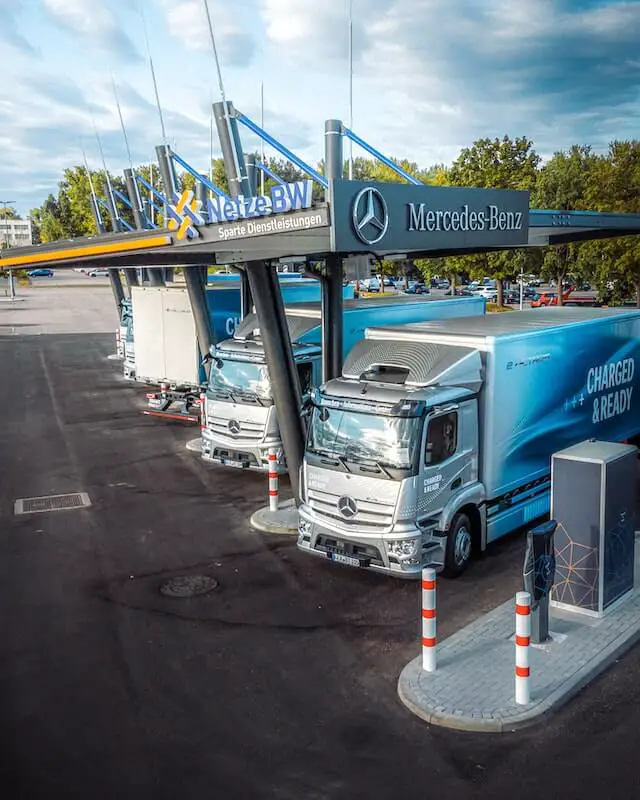We may earn money or products from the companies mentioned in this post.

Self-Driving Semi Trucks: The Future?
Driverless technology, also known as autonomous driving technology, is becoming increasingly popular in the trucking industry. Driverless trucks use sophisticated algorithms and sensors to navigate on the road without human intervention. While the concept of self-driving semi trucks may seem like a distant future, the technology is already being tested by several major trucking companies. The introduction of this technology has the potential to revolutionize the transportation industry by reducing operational costs, increasing efficiency and improving safety.
Current State of Self-Driving Semi Trucks in the Industry
Driverless technology in the trucking industry is still in its infancy, but significant progress has been made in recent years. Many companies, including Tesla, Waymo, and Uber, are investing heavily in research and development in this area. The technology has the potential to revolutionize the industry by improving safety, reducing costs, and increasing efficiency.
Benefits of Driverless Technology
One of the most significant benefits of driverless technology in the trucking industry is the potential to reduce transportation costs. Labor costs account for a significant portion of transportation expenses, and with driverless trucks, the need for drivers is eliminated, leading to a significant reduction in labor costs. Additionally, driverless trucks have the potential to reduce fuel consumption and vehicle maintenance costs, as they can be programmed to operate at optimal speeds and follow the most efficient routes.
Driverless trucks can also increase efficiency in the transportation industry. The technology allows for continuous operation, eliminating the need for drivers to take mandatory rest breaks, which can lead to longer delivery times. With driverless trucks, deliveries can be made more quickly and efficiently, leading to improved customer satisfaction and increased profits for trucking companies.
Finally, driverless technology has the potential to significantly reduce accidents on the road. Driver fatigue is a leading cause of accidents on highways, and with driverless trucks, this risk is eliminated. Additionally, the sensors and algorithms used in driverless trucks are more accurate than human drivers, reducing the risk of accidents caused by human error.
Challenges of Driverless Technology in Trucking
While driverless technology has significant potential benefits, it also presents several challenges for the trucking industry. One of the most significant challenges is the potential loss of jobs for truck drivers. As driverless technology becomes more prevalent, it is possible that many truck drivers may lose their jobs. Additionally, there is a risk that some trucking companies may be resistant to the adoption of driverless technology, as it requires significant investments in technology and infrastructure.
most significant challenges is the potential loss of jobs for truck drivers. As driverless technology becomes more prevalent, it is possible that many truck drivers may lose their jobs. Additionally, there is a risk that some trucking companies may be resistant to the adoption of driverless technology, as it requires significant investments in technology and infrastructure.
Cybersecurity
Another significant challenge to the implementation of driverless technology in trucks is cybersecurity. Driverless trucks are vulnerable to cyber-attacks, which can have significant consequences. A hacker could take control of a driverless truck, causing it to malfunction or even cause an accident. Therefore, it is essential to ensure that driverless trucks are secure from cyber-attacks. However, cybersecurity is a complex issue that requires significant investment in technology and expertise.
Regulation
Regulation is an area that will require a lot of attention with driverless trucks. The use of driverless trucks on public roads is subject to strict regulations, which can be a significant hurdle for trucking companies. The regulations vary from state to state, making it challenging for trucking companies to operate across state lines. Furthermore, the regulations are still evolving, and it is not clear how they will impact the adoption of driverless technology in the future.
Technological Limitations
Driverless technology is still in its early stages of development, and there are several technological limitations that need to be  addressed. For example, driverless trucks rely on sensors and cameras to operate autonomously, and these sensors can be affected by adverse weather conditions such as snow, rain, or fog.
addressed. For example, driverless trucks rely on sensors and cameras to operate autonomously, and these sensors can be affected by adverse weather conditions such as snow, rain, or fog.
Future Implications of Self-Driving Semi Trucks
The future implications of driverless technology in the trucking industry are vast. As the technology becomes more prevalent, it is likely that the trucking industry will undergo significant changes. One potential implication is the development of new trucking business models. With the elimination of the need for drivers, it is possible that new business models may emerge, such as trucking companies that lease or rent autonomous trucks to other businesses.
Another potential implication is the impact on the environment. With the potential to reduce fuel consumption and emissions, driverless technology has the potential to significantly reduce the environmental impact of the transportation industry. Additionally, the technology could lead to the development of new transportation infrastructure, such as dedicated autonomous trucking lanes on highways.
Conclusion
The emergence of driverless technology in the trucking industry presents both opportunities and challenges. On one hand, the adoption of autonomous trucks can improve efficiency, reduce costs, and enhance safety on the roads. On the other hand, there are concerns about the impact of driverless trucks on employment and the potential for accidents or malfunctions. As with any technological innovation, the successful integration of driverless trucks into the industry will require careful planning, collaboration, and regulation. Ultimately, the benefits and risks of driverless technology in the trucking industry will need to be carefully weighed in order to determine the best course of action moving forward.
You Might Also Like – Are EV’s Actually Better for the Environment?

